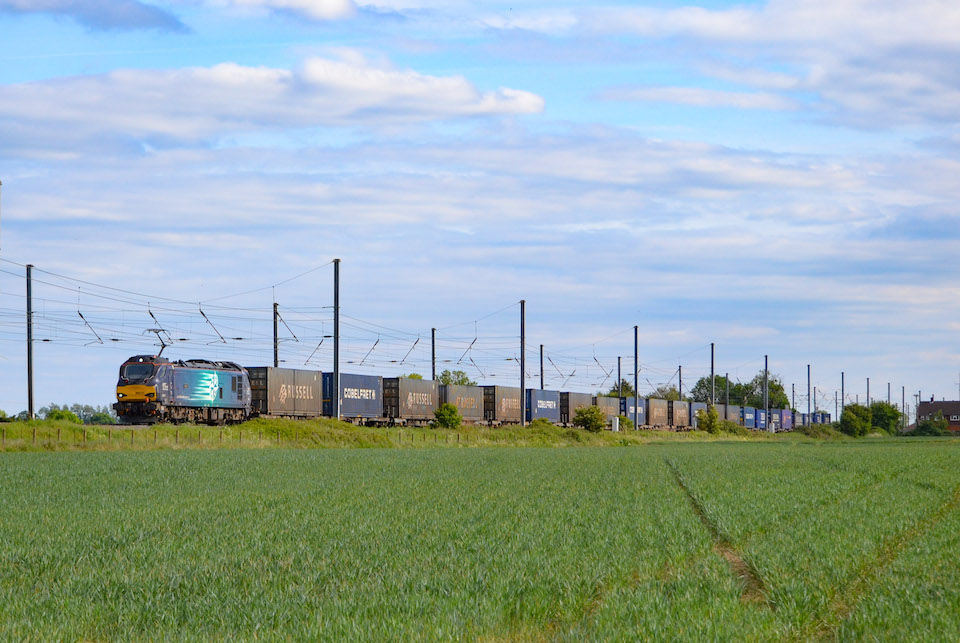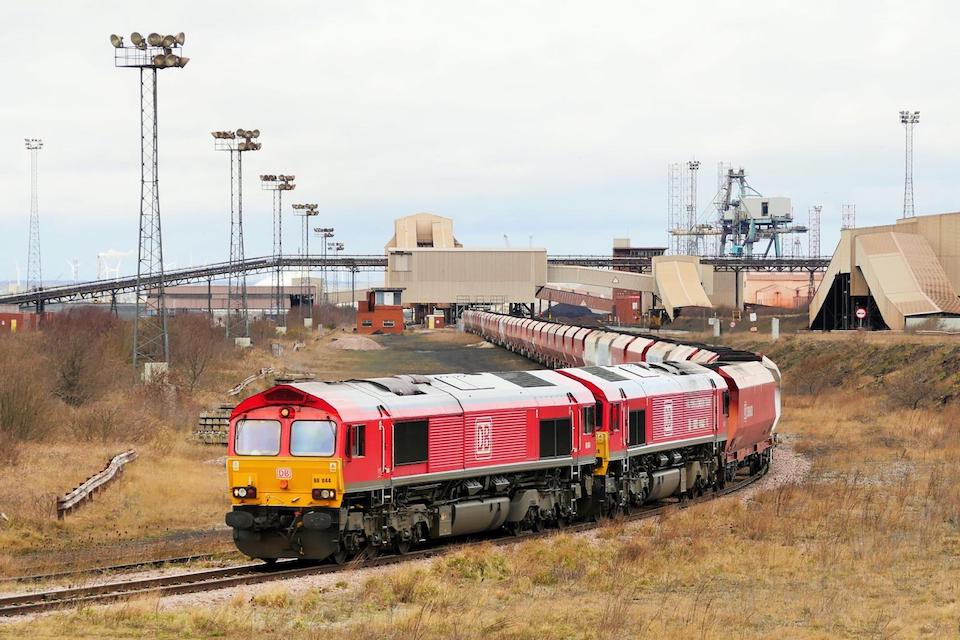Freight and passengers at odds over space on UK’s East Coast line

Fitting fast freight and passengers on the East Coast Main Line in the UK is proving a challenge. The main long distance operator on the line – the London and North Eastern Railway (LNER) – has drawn a storm of criticism for its timetable proposals. Local groups, media and politicians have all cried foul at recast stopping patterns and reduced through services.
The UK’s prestige route between London and Edinburgh is full. This can be drawn the conclusion from the turmoil of a proposed timetable of LNER on the East Coast Main Line.All UK passenger operators are required to recast their timetables in May each year. Not everyone is always pleased with the changes, but rarely are certain parties as displeased as they are with the plans for the East Coast Main Line this time.
“Our proposed May 2022 timetable has been developed by Network Rail with all train and freight operators on the East Coast Main Line. It has involved balancing long-distance, high-speed, regional and commuter/local services alongside the needs of the rail freight sector”, says LNER. However, that has done little to satisfy displeased communities across the North East of England, where the changes will have the most impact.
New rail freight business
Teesside is an area of North East England that is reinventing itself. The region is dominated by Middlesbrough, and communities built on steel-making, like historic railway town Stockton, and Redcar, the unlikely star of the film Dunkirk. After multiple blows to the region’s traditional heavy industry, the area is taking advantage of that industrial legacy to forge new rail freight business – particularly around bulk handing from the expanding Teesport.

The elected civic leader for the area, Ben Houchen, has been a keen supporter of economic regeneration, with an emphasis on green development – and that has included welcoming new rail freight flows. “This news is a kick in the teeth for local people across Teesside, Darlington and Hartlepool”, he said. “We are investing a huge amount of money. I expect train operators to provide the good-quality services which they promised to deliver. It is unacceptable that LNER are planning on cutting trains to London by a third and postponing the planned increase in services to Sunderland and Newcastle.”
Critical rail freight route
Famous as the route of the Flying Scotsman, and connecting iconic British destinations including London, York and Edinburgh, the East Coast Main Line (ECML) is also a critical rail freight route on the national network. Rail freight operators GBRf and DB Cargo both have their operational headquarters on the line, and Freightliner operate multiple flows out of the successful iPort Doncaster. Add to that intermodal flows from east coast ports, including Felixstowe, and the line sees much more than famous expresses rushing by.

Network Rail has been working to increase capacity on the line. The East Coast project is the single biggest programme of works currently in the hands of the national infrastructure agency. High-profile work, like the reshaping of Kings Cross passenger terminal in London and the grade-separated junction at Werrington just north of Peterborough, have been complemented by many more track, signalling and infrastructure projects. All these works are designed to meet both growth in passenger and freight traffic alike.
Regressive timetable changes
LNER has mounted a robust defence of its position. That though has done little to quell the storm of protest in the region. Speaking to a local newspaper, the leader of the local authority in Gateshead, a city neighbouring Newcastle, foresaw the changes as a real problem for his community, which is struggling to recover from de-industrialisation. Council Leader Martin Gannon, said: “It’s almost like a disaster scenario for the North East and significantly hampers the economic prospects of major centres of population.”
His counterpart in the Tees Valley, Ben Houchen, added to that disappointment. “In the coming days and weeks, I will be urging LNER to reverse these regressive timetable changes”, he said. “I’ve already raised my concerns with Network Rail about this matter and will be discussing it with the Transport Secretary to try and rectify what is an obvious error.”
You just read one of our premium articles free of charge
Want full access? Take advantage of our exclusive offer






Maybe if the rail freight sector invested more in bi modes, it wouldn’t be as bad as electric locos are faster. The insistance from rail freight operators to stick with diesel locos is slowing down the potential for that industry but also causing issues with passenger trains as seen here.
That combined with the Govts lack of investment into the rail freight sector.
Everyone wants the benefits of rail freight (including the operators), no one wants to put money into it though!
Utter and compete rubbish.
I’ve been analysing timetables and pathing for decades.There’s plenty of spare capacity on the ecml,Especially north of Newcastle.The only bottlenecks are south of Peterborough.
Take a look at the timetables on realtimetrains and hardly anything moves north of Newcastle where there’s no more than 6 trains an hour on the line going north. There’s a decent amount of passing loops That leaves plenty of headway for slower freight trains.
The ecml has capacity to spare.
Perhaps freight and passenger rail should be two seperate lines then.
Like it should already be.
The Grand Union proposal for a Stirling London train service includes some dedicated carriages for express parcels. Surely that’s something that should be considered ?
Stirling – London is a West Coast Service
This is misplaced criticism at best, citing freight when the DfT actually resents Open Access firms like First and Grand Central, far,far more than freight operators.
And in today’s building scene, constructing third and fourth lines for freight (or any traffic!) is, sadly, ludicrously expensive and unworthy of consideration.
To suggest that freight traffic is impeding passenger growth on the ECML is a complete nonsense.
If you should like to know more, please message me and I will be pleased to explain more fully.
To suggest that freight traffic is impeding passenger growth on the ECML is a complete nonsense.
If you should like to know more, please message me and I will be happy to explain further.
This is nonsense, there is no way that freight traffic is impeding passenger growth on the ECML.
If you should like to know more, please message me and I will be happy to explain further.
The bottleneck that is the Welwyn viaduct has not been addressed. It’s a twin track [not four track] layout with local commuter trains stopping at stations before and after, consuming a disproportionate amount of available time every hour for their paths over it.
Rectifying that would be better value for money than HS2 . . .